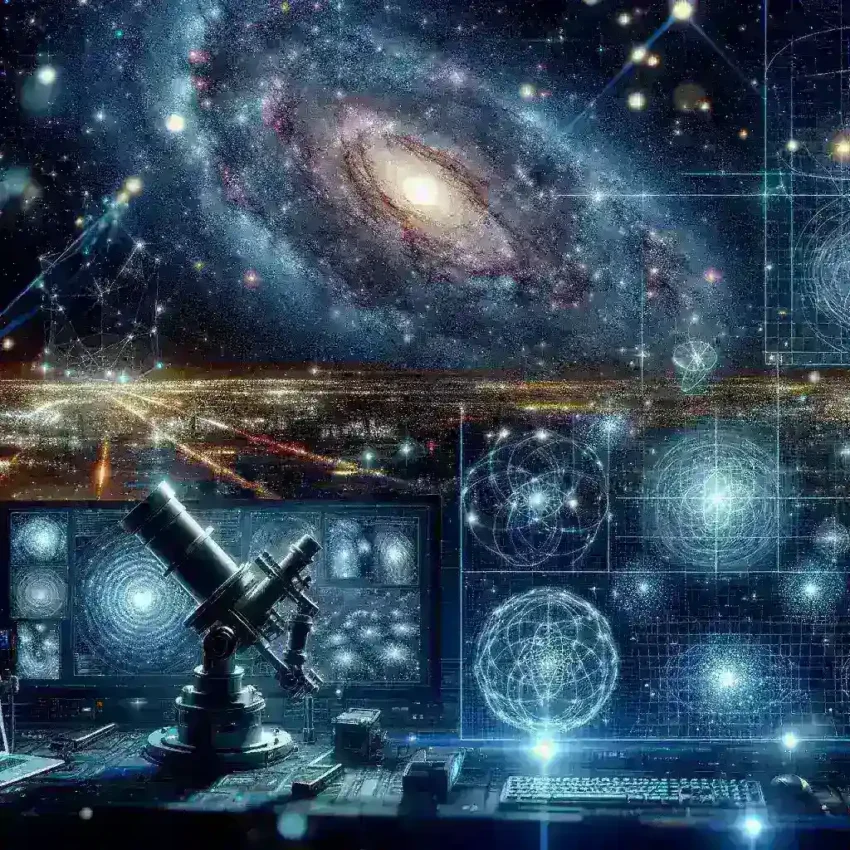Introduction
The universe is vast and filled with mysteries, especially when it comes to understanding faint galaxies that are often shrouded in darkness. With the advent of AI-enhanced astronomical tools, scientists are making groundbreaking strides in reconstructing lost starlight from these elusive celestial bodies. This article delves into the technology behind these tools, their historical context, and their implications for the future of astronomy.
The Historical Context of Starlight Reconstruction
For centuries, astronomers have been captivated by the stars and their formations. The early telescopes gave us glimpses of distant galaxies, but many remained hidden due to their faintness. With the introduction of photographic plates in the 19th century, astronomers could capture images of stars that were previously invisible to the naked eye. However, the challenge remained in extracting meaningful data from these faint signals.
Historically, astronomers relied on visual methods and rudimentary image processing techniques to analyze starlight. The advent of digital imaging in the late 20th century marked a significant turning point, allowing for more sophisticated analysis. Yet, it wasn’t until the integration of artificial intelligence that the field truly began to evolve, offering new ways to interpret and reconstruct lost starlight.
How AI is Enhancing Astronomical Tools
Artificial intelligence, particularly machine learning algorithms, has transformed the way astronomers process and analyze data. These AI tools can identify patterns and make predictions based on vast quantities of astronomical data, significantly improving the accuracy and efficiency of starlight reconstruction.
Machine Learning Algorithms
Machine learning algorithms are designed to learn from data and improve over time. In the context of astronomy, they analyze vast datasets collected from telescopes and other observational tools to differentiate between noise and actual signals from faint galaxies. Here are a few ways AI is enhancing astronomical tools:
- Data Cleaning: AI algorithms can filter out noise and irrelevant data, ensuring that the analysis focuses on the starlight worth studying.
- Image Reconstruction: By employing deep learning techniques, AI can reconstruct images of faint galaxies by filling in the gaps left by lost starlight.
- Pattern Recognition: AI can identify unique signatures in light patterns, helping astronomers classify galaxies based on their characteristics.
Real-World Applications
Several research teams worldwide are currently utilizing AI-enhanced tools to reconstruct lost starlight:
- James Webb Space Telescope (JWST): The JWST employs advanced AI techniques to analyze data that helps scientists gather information about the early universe.
- European Space Agency Missions: Various ESA missions have integrated AI to manage and interpret the vast amounts of data collected from space, leading to insights that were previously unattainable.
The Future of AI in Astronomy
As technology continues to advance, the future of AI in astronomy looks promising. Here’s what we can expect in the coming years:
- Enhanced Imaging Techniques: With improvements in AI algorithms, astronomers will be able to reconstruct images with even greater precision, unearthing details about faint galaxies.
- Collaborative Platforms: The integration of AI tools into collaborative platforms will allow astronomers from around the world to share data and findings, fostering a global effort in understanding the cosmos.
- Real-Time Data Processing: Future AI systems may be able to process data in real-time, allowing scientists to make immediate observations and decisions during astronomical events.
Challenges and Considerations
Despite the remarkable advancements, several challenges must be addressed:
- Data Quality: The quality of data collected is paramount, as AI tools are only as good as the information they process. Ensuring high-quality data is crucial for accurate analysis.
- Interpretation of Results: While AI can enhance data analysis, human interpretation remains vital. The collaboration between AI and astronomers is essential for deriving meaningful conclusions.
- Ethical Considerations: As with any technology, the ethical implications of using AI in space exploration must be considered, particularly regarding data privacy and the potential for misuse.
Conclusion
AI-enhanced astronomical tools are revolutionizing our understanding of the universe, particularly in reconstructing lost starlight from faint galaxies. By harnessing the power of machine learning and data analysis, astronomers are uncovering insights that were previously hidden in the dark. As we look to the future, the collaboration between AI and human expertise will undoubtedly lead to new discoveries and a deeper understanding of the cosmos.
References
As we continue to explore the universe, the integration of AI into astronomical tools will pave the way for future discoveries, allowing us to glimpse the beauty and complexity of our universe’s faintest galaxies.

